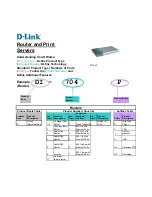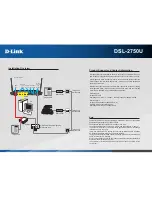
SECTION 4. OPERATION OF THE RADIOTELEMETRY NETWORK
4-2
Do _____ RETRIES USING A _______
SEC PERIOD THEN USE _______ SEC:
This allows specifying the rate of reties for a
maintenance operation that fails. The
intervals must be long enough to allow the
operation being retried to complete.
Generally, it is a good idea to make these
fairly slow as they are not needed unless an
operation fails. These are specified as part
of the description for the RFBase and the
field stations.
[REPTR,] SWITCH SETTING: Used to
specify the communication path for radio
communication. For direct links (no
repeaters), enter the station ID set with the
address switches at the remote. To utilize a
repeater, precede the station ID with the
station ID of the repeater(s) to be used.
Separate the addresses with commas. This
parameter is specified for each of the field
stations.
4.1.1.2 SETTING AND CHECKING
CLOCKS.
NetAdmin has a screen for setting and
checking clocks. The following describes
some of the settings that are RF dependent.
Include the RFBase in the list of stations to
have their clocks checked, since the
RFBase uses its clock to schedule polling.
The RFBase always updates its clock when
it receives a command to check or set its
clock. It will always read that it was zero
seconds off.
The IF MORE THAN _____ SECONDS
OFF. parameter specifies how far off the
clock can be before it will be set. The
DlsMgr will attempt to set a given clock
(several times if necessary) until it sets the
clock within this threshold. For RF networks
a value greater than 5-10 seconds is
practical.
The RESCHEDULE WDOG [MIN]:
parameter determines how long DlsMgr will
attempt to set the clock at a site before
giving up and moving on to the next site.
This time should be large enough to
accommodate the initial attempt and some
retries.
4.1.1.3 NETWORK HEALTH AND
STATUS-WARNING-FAULT MESSAGES
The RF-specific messages are described in
Section 2.6.1 of this manual.
4.1.1.4 DLD PROGRAM DOWNLOAD
EDLOG (also supplied with RTMS) can be
used to create and edit datalogger programs
(DLD files). NetAdmin can then be used to
download these programs to the datalogger.
This saves the user from having to travel to
the datalogger site to program the
datalogger. A large DLD program may take
several minutes to download. Several
stations can have programs queued up for
downloading thus the user can update the
programming at several sites without being
present to start a new download when the
previous one ends. The user should check
periodically to ensure that the downloads are
progressing as expected.
4.1.1.5 REMOTE KEYBOARD
NetAdmin provides remote keyboard
emulation. This allows viewing of the
datalogger programs and the datalogger *
modes. It may take several seconds to see
a response to the keys pressed depending
on the communication paths and polling
interval. If a poll is in progress, it will be
finished before the key presses are sent to
the datalogger. For this reason, networks
that are busy, i.e., where the polling interval
is close to the actual time required to poll the
network, may be slower as polling is going
on all the time.
4.1.2 DISPLAYING DATA WITH RTM (REAL
TIME MONITOR)
RTM is used to display data as it is collected
from the datalogger. While none of the
settings in RTM are RF specific, it is
important to realize that the frequency of
data updates will be directly tied to the
polling interval and the RF communication.
When strip chart displays are used, RTM will
attempt to collect enough old data to backfill
the strip chart. This can take several
minutes or more when RF is in use. This
can be disabled using the BACKFILL enable
under OPTIONS on the RTM main menu.











































